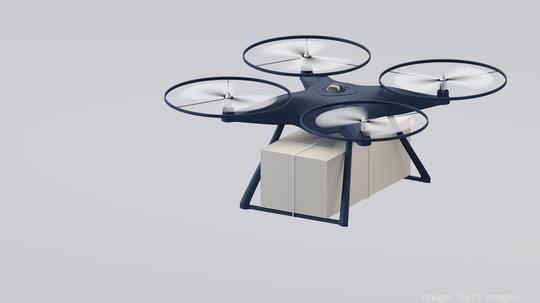
Often used as a tool to tackle dull, dirty and dangerous jobs, unmanned systems, like drones, may soon be more commonplace in the Hampton Roads area.
“We talk a lot about the art of the possible, there’s so much more that these technologies can do to help us with,” said Tracy Tynan, director of the Virginia Unmanned Systems Center at the Virginia Center for Innovative Technology.
CIT and the Virginia Institute for Space Flight and Autonomy recently launched a program to develop a Hampton Roads-Eastern Shore Unmanned Systems (UxS) Strategic Playbook. The goal of the program is to focus on the continued development and expansion of unmanned ground, aerial, maritime and space technologies.
“We want to be able to demonstrate that these technologies can help us perform tasks more safely, more efficiently, at a lower cost and actually provide us with much better and more accurate data than maybe what our traditional methods have done,” Tynan said.
The announcement of the playbook and search for UxS solutions began at the Unmanned Systems Industry Engagement Summit in July. The summit, which covered problem-solving options utilizing autonomous technologies, was attended by innovation leaders in the Hampton Roads region.
VISA will initiate and implement the pilot programs to support CIT’s UxS strategic plan to grow the industry across Virginia.
“To move these technologies forward we need a lot more funding, and it would be something we hope to put in front of the General Assembly,” Tynan said.
She said larger projects may require reaching out for federal funding and noted that focus will be unmanned systems for commercial use.
“Customer demand, at the end of the day, is how these technologies are going to grow,” she said. “So, we need to prove to potential customers the benefits of these technologies, and then hopefully create that customer demand that will help us spur on job creation.”
CIT Unmanned Systems Center and VA Institute for Spaceflight and Autonomy “are exploring the potential and viability of using drones in such projects as deploying flotation devices to complement lifeguard rescue operations,” Tynan said.
The drones, she said, could also be used to identify riptides and marine life, as well as opportunity in the offshore wind industry.
“You can fly a drone to take a close look at the turbine blades themselves; the wear on the blades on the leading edge is always a concern because it decreases the efficiency,” she said. “We think there is going to be an opportunity with the offshore wind industry.”
Noting that privacy is a concern for many people with the so-called “eyes in the sky”, Tynan said it’s important the public understand that although these vehicles can collect an abundance of data, the data will be secured before its used in any way.